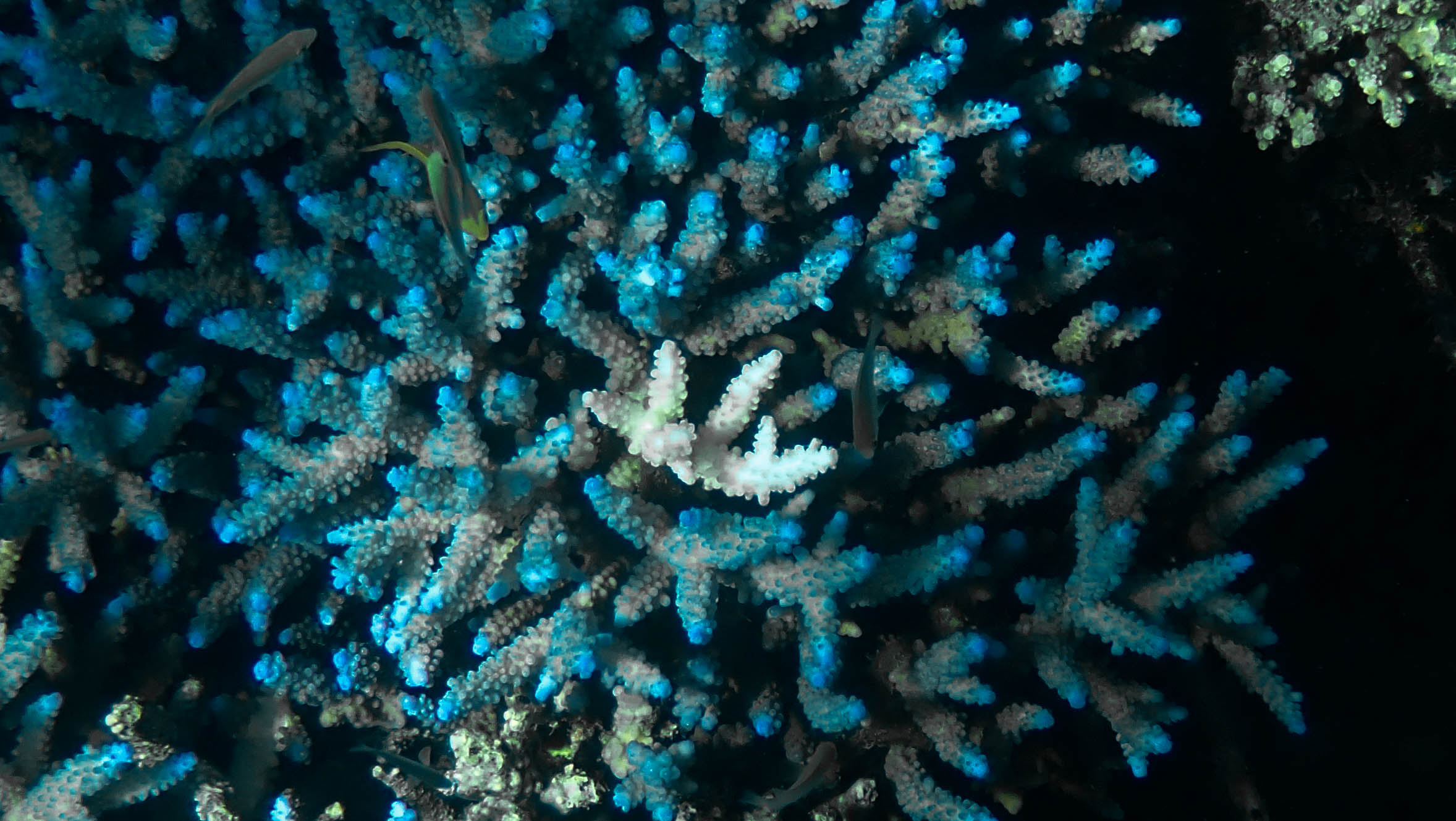The resilience of some coral reefs to global warming

Coral bleaching
The sea surface temperature has increased by 0.1 ° C per decade over the last century (Levitus et al., 2005, IPCC 2013). The main effect of global warming on corals is the disruption of their symbiotic relationship with a microalga (zooxanthella). Indeed, an increase in temperatures leads zooxanthellae to produce reactive derivatives of oxygen that damage the DNA which can lead to various diseases. Therefore, in its interest, the coral host expels the microalgae (Lesser, 2006). However, zooxanthellae are responsible for the color of corals, so this expulsion makes the coral go white (Glynn, 1993). This phenomenon is called “coral bleaching” (Glynn, 1993) (cf Fig.1). Because of the loss of many benefits (protection, food, etc.) bleaching often results in the coral’s death (Eakin et al., 2010, De’ath et al., 2012, Hughes et al., 2018).

Figure 1 : Different health conditions in Mussimilia hispida in the subtropical southwestern Atlantic. aHealthy colony, bSlightly bleached colony and cSeverely bleached colony (Source : Banha et al., 2019)
The reefs of the subtropical regions are subject to marginal living conditions compared to tropical reefs (lower annual temperatures, for example). Reefs that thrive in these oceanographic conditions, that are intolerable to other reefs, are called “marginal coral communities (CCMs)”.
Coral resilience among “marginal coral communities” (CCMs)
The subtropical reefs of the Southwest Atlantic near Brazil form a CCM and have been studied in two types of areas: coastal and island (Banha et al., 2019). Since these reefs are further from the equator than tropical reefs, they live in marginal conditions (increased turbidity and large fluctuations in temperature, among other things (Valentim et al., 2013, Melo Ju’nior et al., 2016; et al., 2018)). The coral Mussismilia hispida is an endemic species from this area.
In February 2019, M. hsipida populations experienced a major heat wave in the subtropical Atlantic Southwest (18.5 ° C-week for coastal areas and 20.5 ° C-week for insular areas). These values are the highest ever recorded, not only for the subtropical region of Brazil, but for the whole South Atlantic. As a result, 80% of the coral population Mussilmilia hispida (1119 colonies surveyed) bleached on coastal sites and 20% on island sites.
Coral bleaching usually causes mass mortality, for example in northwestern Australia where 13 ° C-week caused 70-90% mortality (Gilmour et al., 2013). However, despite this strong bleaching episode, only 2% died in the Brazilian CCMs studied.
Such low mortality could be explained by M. hispida’s specific characteristics such as higher tissue thickness (Loya et al., 2001, Schlo & D’Croz, 2004) or the ability to change their diet to ward off the end of symbiosis (Mies et al., 2018). The subtropical marginal conditions that these corals are accustomed to may also give them additional tolerance to stress caused by heat (Oliver & Palumbi, 2011, Pandolfi et al., 2011). This study (Banha et al., 2019) shows that although this coral community is susceptible to bleaching, it is remarkably tolerant and resilient.
Climate refuges are essential for the survival of coral reefs in times of global warming (Kiessling 2009, Greenstein & Pandolfi 2008). Such CCMs should therefore be considered as priority areas for conservation.[/vc_column_text][/vc_column][/vc_row]

